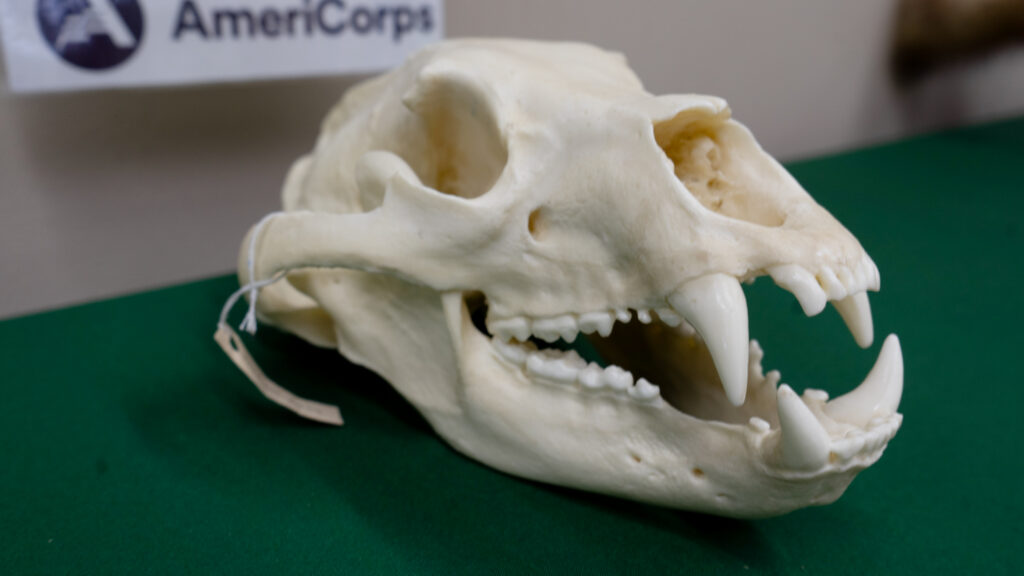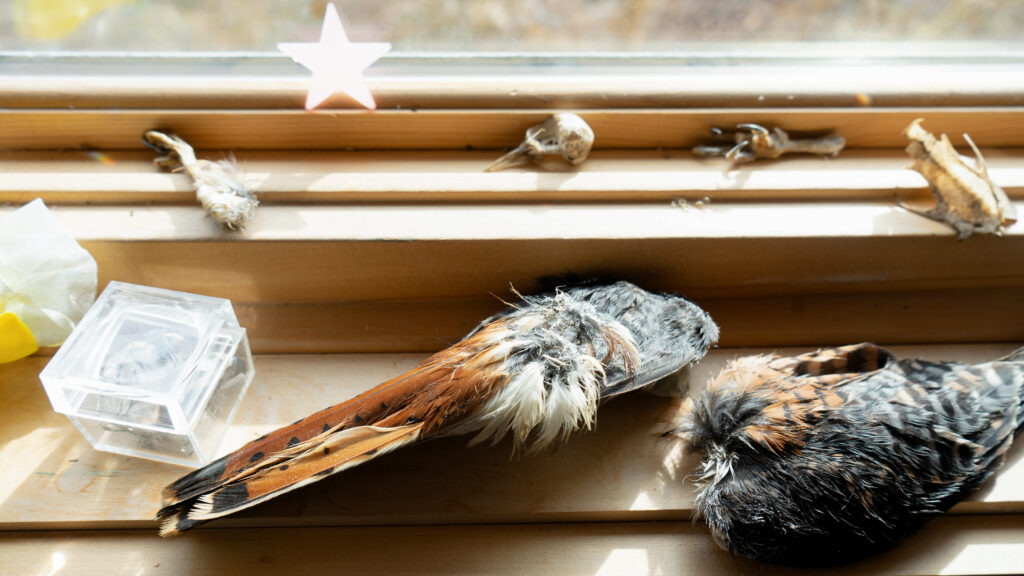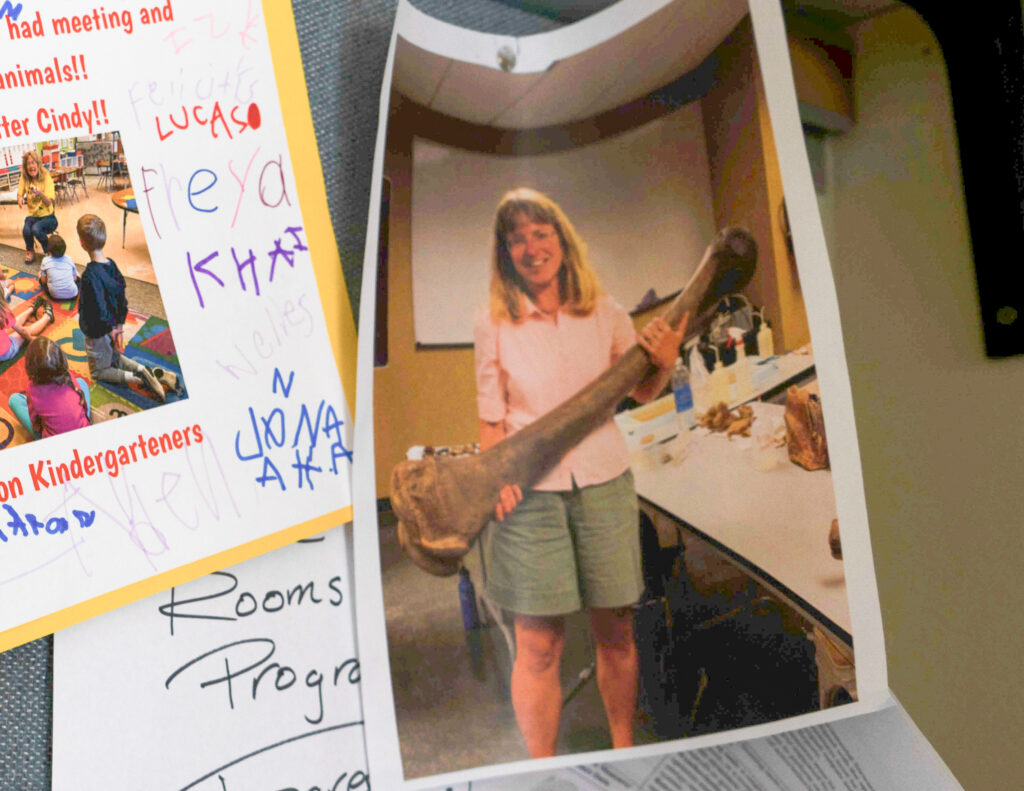Cindy Blobaum | Environmental Education Program Manager
Atop the cabinet in The Nature Place hallway are two plastic resin skulls. These skulls are lifelike, very popular, and represent two animals that can be found in Wisconsin: white-tail deer and black bear. Scattered around the property, my office windowsill, and tucked in the cabinets are REAL skulls of all sorts – in various sizes and conditions.

As long as I have been a naturalist, I have been a collector, cleaner and keeper of real, really dead animals. I find them to be fascinating and fantastic teaching tools. Once people get past the “ick” stage and take a closer look, most are in awe with what you can learn. For example, rodents big and small have incisors (front teeth) that never stop growing. Rabbit incisors are stacked, one behind another. Shrews have red incisors, which seems appropriate for our only venomous mammal in Wisconsin. Deer have incisors only on the bottom jaw, not on the top.

One place I worked in Iowa had a very scant selection, which I was striving to increase by legally collecting road kill. I carefully placed the dead bodies behind the shed on my very large lot to decompose. Much to my dismay, they kept disappearing! This inspired me to write my monthly newspaper article about the ongoing thefts. Not too much later, I came across the thief in the act- a skunk loving the beetles and larvae that are nature’s clean-up crew. The skunk inspired the creation of a secure “rot-box” – a contraption that lets the small decomposers in and out but keeps the body in place for future reclamation.

At the same job, I had the larger cadavers spread around the wooded areas near the remote office. When a public television video crew showed up for a planned shoot, they were wandering around the building. I came out on the balcony and yelled down to one crewmember, “Don’t step on my dead badger!” (It had taken me a long time to find a dead badger with an intact head!) Memorable first words to the man who would later become my husband.
One section of my bookshelf reflects this interest. A few of my favorites include:
– The Wild Mammals of Missouri, a well-regarded identification guide to the skulls of most Midwestern wildlife.
– For shear imagery of a wider range, Skulls: An Exploration of Alan Dudley’s Curious Collection is quite impressive.
– Skulls and Skeletons: With 25 Science Projects for Kids I authored this book while working on a Skulls of all Sorts exhibit.

My colleagues and team members at The Nature Place have been very gracious in their reception of my efforts to expand the collections here as well. In fact, it has become a familiar refrain:
“Cindy, I have something for you!”
“What kind of dead animal?”
Stop by The Nature Place during our open hours to check out the replica skulls on the cabinet, or a few real skulls on the touch table. And if I’m around, you can ask what is currently being naturally cleaned to join the collection.

